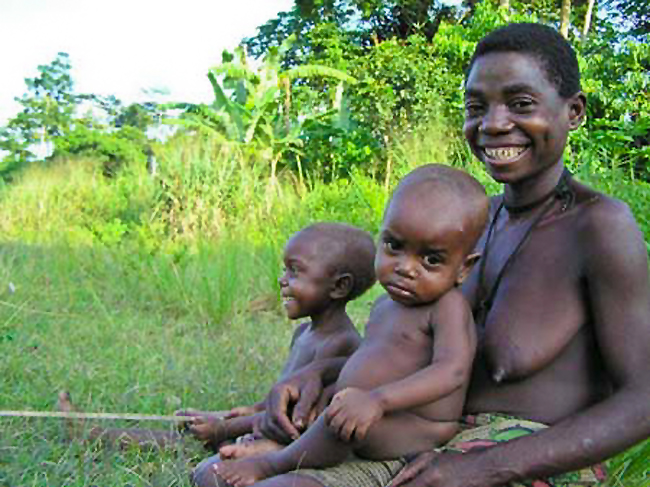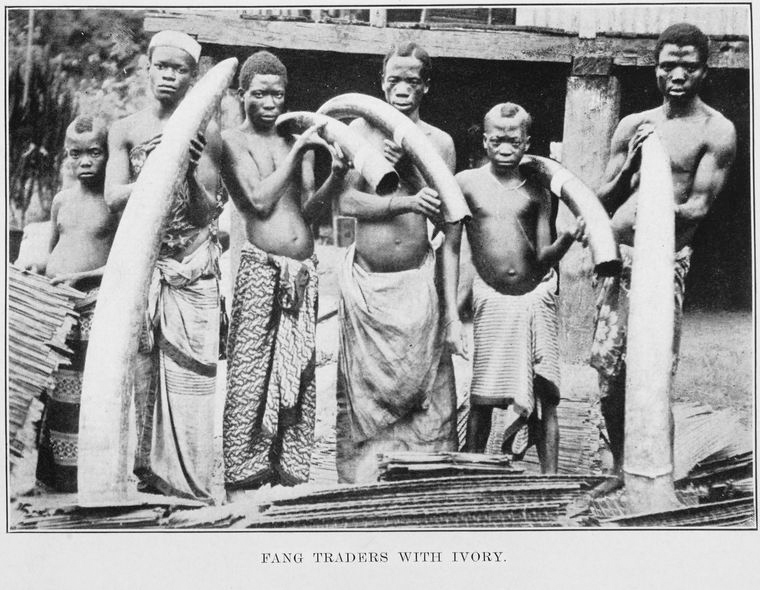|
Aka People
The Aka or Biaka (also ''Bayaka, ''Babenzele) are a nomadic African Pygmies, Mbenga pygmy people. They live in south-western Central African Republic and in northern Republic of the Congo. They are related to the Baka (Cameroon and Gabon), Baka people of Cameroon, Gabon, northern Congo, and southwestern Central African Republic. Unlike the Mbuti pygmies of the eastern Congo (who speak only the language of the tribes with whom they are affiliated), the Aka speak Aka language, their own language along with whichever of the approximately 15 Bantu peoples they are affiliated. In 2003, the oral traditions of the Aka were proclaimed one of the Masterpieces of the Oral and Intangible Heritage of Humanity by UNESCO. They were featured in the July 1995 National Geographic Magazine, National Geographic article "Ndoki: the Last Place on Earth", and a 3-part TV series. Society A traditional hunter-gatherer society, the Aka have a varied diet that includes 63 plants, 28 species of game ... [...More Info...] [...Related Items...] OR: [Wikipedia] [Google] [Baidu] |
African Pygmies
The African Pygmies (or Congo Pygmies, variously also Central African foragers, African rainforest hunter-gatherers (RHG) or Forest People of Central Africa) are a group of ethnicities Indigenous peoples of Africa, native to Central Africa, mostly the Congo Basin, traditionally subsisting on a foraging, forager and hunter-gatherer lifestyle. They are divided into three roughly geographic groups: *The western ''Bambenga'', or ''Mbenga'' (Cameroon, Gabon, Republic of the Congo, Central African Republic), *the eastern ''Bambuti'', or ''Mbuti'', of the Congo basin (Democratic Republic of the Congo, DRC) *the central and southern ''Batwa'', or ''Twa'' (Rwanda, Burundi, Democratic Republic of the Congo, DRC, Tanzania, Uganda, Zambia, Angola and Namibia). The more widely scattered (and more variable in physiology and lifestyle) Southern Twa are also grouped under the term Pygmoid. They are notable for, and named for, their short stature (described as "pygmyism" in anthropological l ... [...More Info...] [...Related Items...] OR: [Wikipedia] [Google] [Baidu] |
Hunter-gatherer
A hunter-gatherer or forager is a human living in a community, or according to an ancestrally derived Lifestyle, lifestyle, in which most or all food is obtained by foraging, that is, by gathering food from local naturally occurring sources, especially wild edible plants but also insects, Fungus, fungi, Honey hunting, honey, Eggs as food, bird eggs, or anything safe to eat, or by hunting game (pursuing or trapping and killing Wildlife, wild animals, including Fishing, catching fish). This is a common practice among most vertebrates that are omnivores. Hunter-gatherer Society, societies stand in contrast to the more Sedentism, sedentary Agrarian society, agricultural societies, which rely mainly on cultivating crops and raising domesticated animals for food production, although the boundaries between the two ways of living are not completely distinct. Hunting and gathering was humanity's original and most enduring successful Competition (biology), competitive adaptation in the nat ... [...More Info...] [...Related Items...] OR: [Wikipedia] [Google] [Baidu] |
World Wildlife Fund
The World Wide Fund for Nature (WWF) is a Swiss-based international non-governmental organization founded in 1961 that works in the field of wilderness preservation and the reduction of human impact on the environment. It was formerly named the World Wildlife Fund, which remains its official name in Canada and the United States. WWF is the world's largest conservation organization, with over 5 million supporters worldwide, working in more than 100 countries and supporting around 3,000 conservation and environmental projects. It has invested over $1 billion in more than 12,000 conservation initiatives since 1995. WWF is a foundation with 65% of funding from individuals and bequests, 17% from government sources (such as the World Bank, FCDO, and USAID) and 8% from corporations in 2020. WWF aims to "stop the degradation of the planet's natural environment and to build a future in which humans live in harmony with nature." '' Living Planet Report'' has been published every two year ... [...More Info...] [...Related Items...] OR: [Wikipedia] [Google] [Baidu] |
Congo-Brazza
The Republic of the Congo, also known as Congo-Brazzaville, the Congo Republic or simply the Congo (the last ambiguously also referring to the neighbouring Democratic Republic of the Congo), is a country located on the western coast of Central Africa to the west of the Congo River. It is bordered to the west by Gabon, to the northwest by Cameroon, to the northeast by the Central African Republic, to the southeast by the Democratic Republic of the Congo, to the south by the Angolan exclave of Cabinda, and to the southwest by the Atlantic Ocean. The region was dominated by Bantu-speaking tribes at least 3,000 years ago, who built trade links leading into the Congo River basin. From the 13th century, the present-day territory was dominated by a confederation led by Vungu which included Kakongo and Ngoyo. Loango emerged in the 16th century. In the late 19th century France colonised the region and incorporated it into French Equatorial Africa. The Republic of the Congo was establ ... [...More Info...] [...Related Items...] OR: [Wikipedia] [Google] [Baidu] |
Ituri Rainforest
The Ituri Rainforest ( French: ''Forêt tropicale de l’Ituri'') is a rainforest located in the Ituri Province of northeastern Democratic Republic of the Congo. The forest's name derives from the nearby Ituri River which flows through the rainforest, connecting firstly to the Aruwimi River and finally into the Congo. Geography The Ituri Rainforest is about in area, and is located between 0° and 3°N and 27° and 30° E. Elevation in the Ituri ranges from about . The climate is warm and humid, as exemplified by the nearby city of Bunia, which however is at a slightly higher elevation. About one-fifth of the rainforest is made up of the Okapi Wildlife Reserve, a World Heritage Site. It is also the home of the Mbuti pygmies, one of the hunter-gatherer peoples living in equatorial rainforests characterised by their short height (below , on average). They have been the subject of research by a variety of outsiders, including Patrick and Anne Eisner Putnam, who lived on the b ... [...More Info...] [...Related Items...] OR: [Wikipedia] [Google] [Baidu] |
French Equatorial Africa
French Equatorial Africa (, or AEF) was a federation of French colonial territories in Equatorial Africa which consisted of Gabon, French Congo, Ubangi-Shari, and Chad. It existed from 1910 to 1958 and its administration was based in Brazzaville. History Established in 1910, the Federation contained four colonial possessions: French Gabon, French Congo, Ubangi-Shari and French Chad. The Governor-General was based in Brazzaville with deputies in each territory. In 1911, France ceded parts of the territory to German Kamerun as a result of the Agadir Crisis. The territory was returned after Germany's defeat in World War I, while most of French Cameroon, Cameroon proper became a French League of Nations mandate not integrated into the AEF. French Equatorial Africa, especially the region of Ubangi-Shari, had a similar concession system as the Congo Free State and similar atrocities were also committed there. Writer André Gide traveled to Ubangi-Shari and was told by inhabita ... [...More Info...] [...Related Items...] OR: [Wikipedia] [Google] [Baidu] |
Ivory Trade
The ivory trade is the commercial, often illegal trade in the ivory tusks of the hippopotamus, walrus, narwhal, black and white rhinos, mammoth, and most commonly, African elephant, African and Asian elephants. Ivory has been traded for hundreds of years by people in Africa and Asia, resulting in restrictions and bans. Ivory was formerly used to make piano keys and other decorative items because of the white color it presents when processed but the piano industry abandoned ivory as a key covering material in the 1980s in favor of other materials such as plastic. Also, synthetic ivory has been developed which can be used as an alternative material for making piano keys. Elephant ivory Elephant ivory has been exported from Africa and Asia for millennia with records going back to the 14th century Common Era, BCE. Transport of the heavy commodity was always difficult, and with the establishment of the early-modern slave trades from East and West Africa, freshly captured Slavery, ... [...More Info...] [...Related Items...] OR: [Wikipedia] [Google] [Baidu] |
Atlantic Slave Trade
The Atlantic slave trade or transatlantic slave trade involved the transportation by slave traders of Slavery in Africa, enslaved African people to the Americas. European slave ships regularly used the triangular trade route and its Middle Passage. Europeans established a coastal slave trade in the 15th century and trade to the Americas began in the 16th century, lasting through the 19th century. The vast majority of those who were transported in the transatlantic slave trade were from Central Africa and West Africa and had been sold by West African slave traders to European slave traders, while others had been captured directly by the slave traders in coastal raids. European slave traders gathered and imprisoned the enslaved at slave fort, forts on the African coast and then brought them to the Americas. Some Portuguese and Europeans participated in slave raids. As the National Museums Liverpool explains: "European traders captured some Africans in raids along the coast, but bou ... [...More Info...] [...Related Items...] OR: [Wikipedia] [Google] [Baidu] |
Colonialism
Colonialism is the control of another territory, natural resources and people by a foreign group. Colonizers control the political and tribal power of the colonised territory. While frequently an Imperialism, imperialist project, colonialism can also take the form of settler colonialism, whereby settlers from one or multiple colonizing metropoles occupy a territory with the intention of partially or completely supplanting the existing population. Colonialism developed as a concept describing European colonial empires of the modern era, which spread globally from the 15th century to the mid-20th century, spanning 35% of Earth's land by 1800 and peaking at 84% by the beginning of World War I. European colonialism employed mercantilism and Chartered company, chartered companies, and established Coloniality of power, coloniality, which keeps the colonized socio-economically Other (philosophy), othered and Subaltern (postcolonialism), subaltern through modern biopolitics of Heterono ... [...More Info...] [...Related Items...] OR: [Wikipedia] [Google] [Baidu] |
Barry Hewlett
Barry S. Hewlett is Professor of Anthropology at Washington State University, earned his A.B. and M.A. degrees at California State University, Chico and his Ph.D. from the University of California at Santa Barbara. He is best known for his study of the Aka (Pygmy tribe) people of Central Africa. He has worked with his wife, Dr. Bonnie Hewlett, who concentrates her study on the Aka women and health issues. His publications include six books, 24 chapters in books and 27 scholarly journal articles. His research interests currently include the cultural influence of the Aka and Ngandu on infant development, the cultural contexts of various tropical diseases, the impact of new African tropical forest parks and reserves on the local people, and cultural transmission and biocultural evolution. His interests in infectious diseases include local cultural models of disease, incorporating anthropological approaches to disease control efforts, and emerging diseases including Ebola. Hewlett ... [...More Info...] [...Related Items...] OR: [Wikipedia] [Google] [Baidu] |






